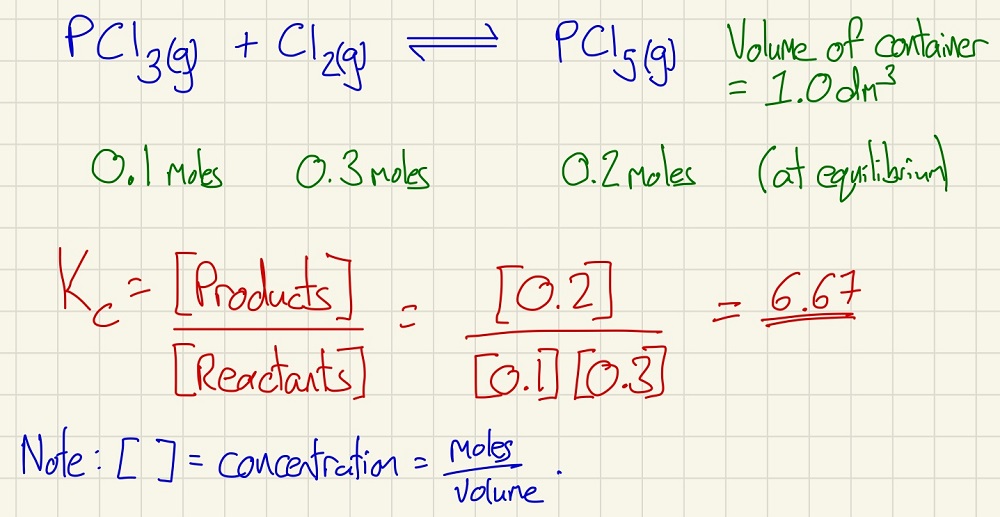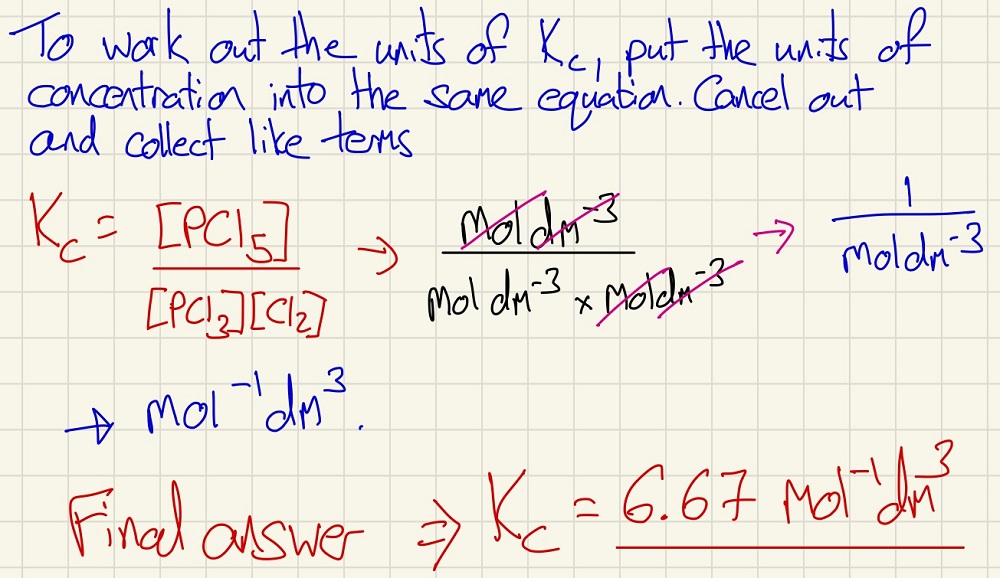AS - Equilibrium
Key learning for this topic
You have already met the concept of a reversible reaction. Dynamic equilibrium takes into account that the forward reaction and the reverse reaction never stop happening (dynamic) but for it to be in balance, the rate of the forward reaction is equal to the rate of the reverse reaction (equilibrium).

You need to understand and be able to apply Le Chatelier's principle. This states that if you change the conditions of a dynamic equilibrium, the position of this equilibrium will change to oppose those changes to the conditions.

• If you heat up the mixture, the equilibrium will move in the endothermic direction to absorb heat.

• If you increase the pressure on gases, the equilibrium will move to the side with the fewest number of moles of gas to relieve that pressure.

• If you add more of a regent (reactant or product), the equilibrium will move to use it up.

Below is a reaction at equilibrium. We are given the concentrations so need to work out the equilibrium constant for this reaction. Note that the constant is only for this temperature.

Now that we have this constant, we need to explore how we calculate the units.

Changes in equilibrium can be calculated using ICE calculations (Initial - Change - End point).

Now find lots of past exam questions so that you can practice what happens if you have different numbers of products/reactants to the examples that I have used. See the effect on the units as the stoichiometry changes.

This page was updated on: 7th November 2023
